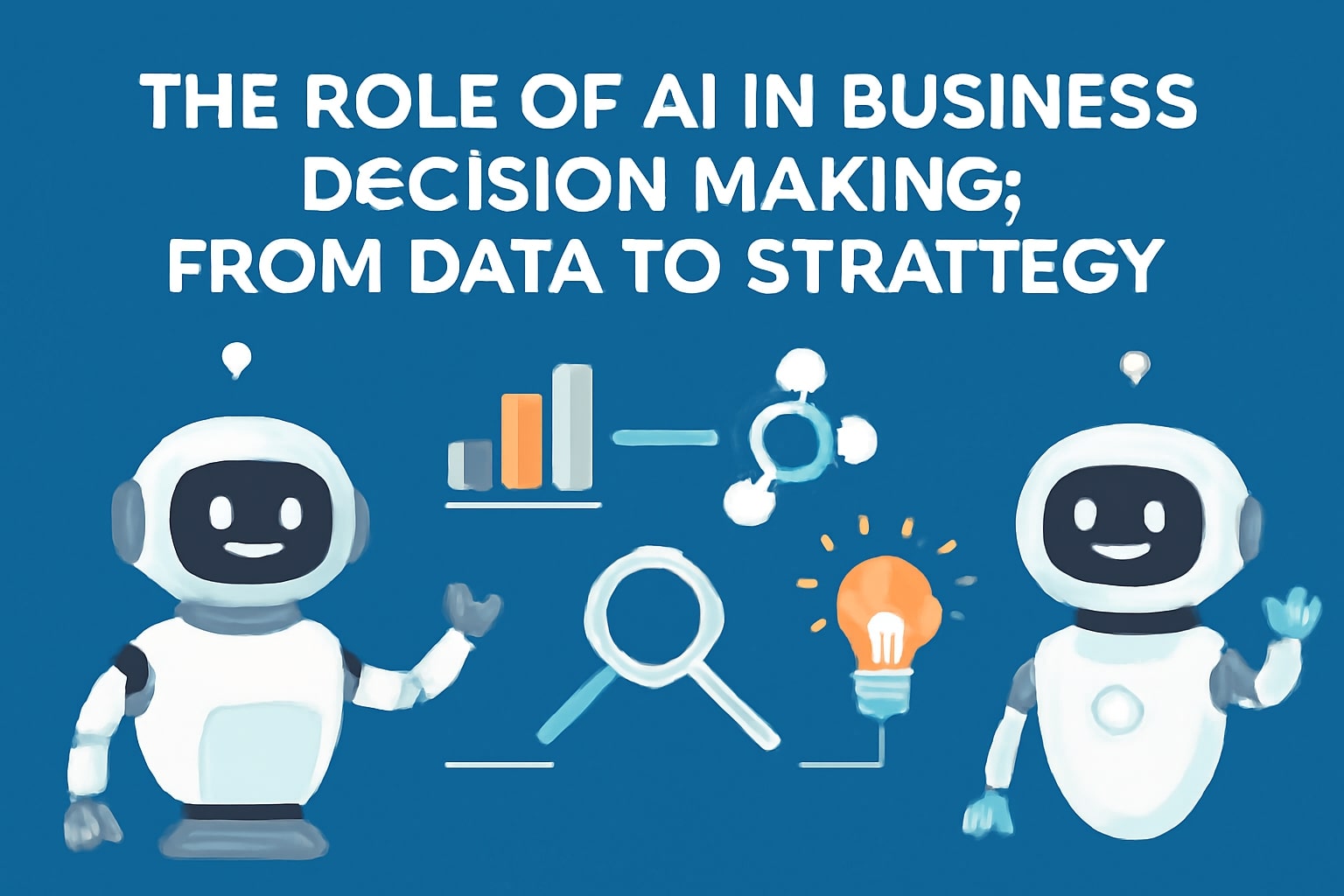Historically, business decisions have been guided by experience, intuition, and fragmented data. Today, a new co-pilot is in the boardroom: Artificial Intelligence (AI). AI in business decision making is transforming leadership from a reactive art into a proactive, data-driven science. Here’s how AI informs and empowers decisions at every level.

From Descriptive to Prescriptive Analytics in Business Decision Making
AI moves businesses beyond simply understanding what happened (descriptive analytics) to knowing what to do about it (prescriptive analytics). This is a core strength of AI in business decision making.
| Type of Analytics | Question it Answers | Example | AI’s Role |
|---|---|---|---|
| Descriptive | What happened? | Sales were down 10% last quarter. | AI aggregates and visualizes data. |
| Diagnostic | Why did it happen? | A key competitor launched a new product. | AI finds correlations and patterns in data. |
| Predictive | What will happen? | Sales are predicted to fall another 5%. | AI builds models to forecast outcomes. |
| Prescriptive | What should we do? | Launch a targeted promotion and accelerate our product roadmap. | AI simulates scenarios and recommends actions. |
For a deeper dive, see IBM’s guide to prescriptive analytics.

How AI Informs Key Business Decisions
1. Strategic Decisions in AI Business Strategy
Example: Entering a new market or launching a new product line.
AI’s Role: AI analyzes market data, consumer trends, competitor strategies, and regulatory environments to identify opportunities and risks. This strengthens AI in business decision making for strategy.
2. Operational Decisions with AI
Example: Setting prices, managing inventory, allocating resources.
- Implements dynamic pricing that adjusts in real-time.
- Optimizes supply chains to minimize costs and delays.
- Automates resource allocation for marketing or R&D.
Learn more about AI in supply chain optimization.
3. Financial Decisions Using AI
Example: Budgeting, forecasting, investment decisions.
AI’s Role: AI provides accurate revenue forecasts, analyzes investment opportunities, and helps with M&A strategy.
4. People Decisions Powered by AI
Example: Hiring, promotion, retention strategies.
AI’s Role: AI identifies the best candidates, predicts employee flight risk, and recommends personalized career paths.
See how LinkedIn uses AI for talent solutions.
Related: How AI is Transforming HR and Talent Management

